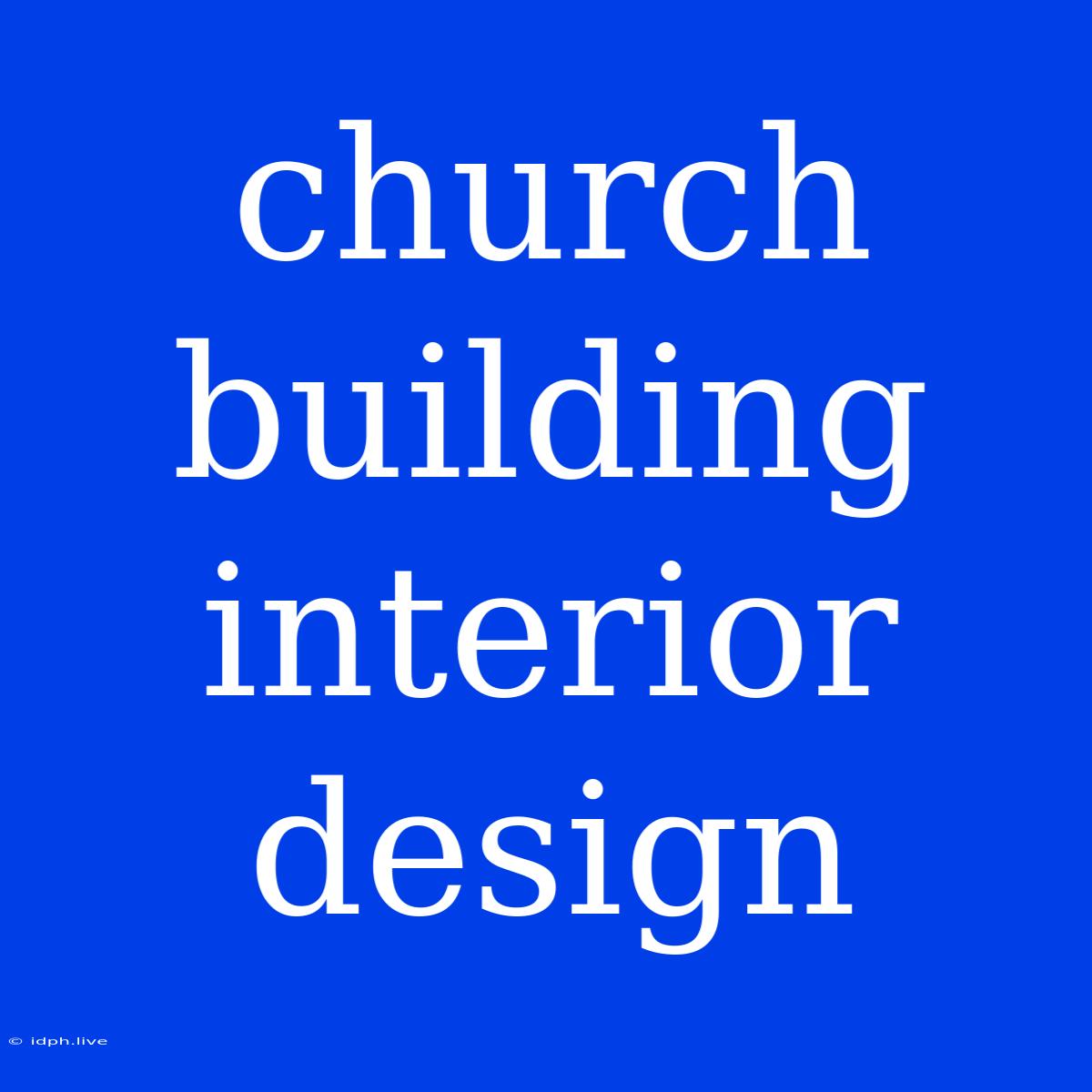Church Building Interior Design: Creating a Sacred and Welcoming Space
A church building is more than just a structure; it's a sanctuary, a place of worship, and a gathering space for a community. The interior design of a church plays a crucial role in creating an atmosphere that fosters spiritual connection, inspires reflection, and welcomes all who enter.
Key Considerations for Church Interior Design:
1. Functionality and Flow:
- Worship Space: The main worship area should be designed to facilitate congregation and promote a sense of unity. Consider factors like seating arrangement, visibility of the altar, and ease of movement.
- Accessibility: Ensure the space is accessible to people with disabilities, including ramps, wide doorways, and designated seating.
- Multi-Purpose Use: Churches often host various events, from Sunday services to community gatherings. Design the space to accommodate different configurations and activities.
2. Aesthetics and Symbolism:
- Color Palette: Choose colors that evoke feelings of peace, tranquility, and spirituality. Warm colors like gold and red can symbolize warmth and comfort, while cooler tones like blue and green can convey calmness and serenity.
- Lighting: Natural light is highly valued in church design, creating a sense of openness and connection to the divine. Artificial lighting should be soft and ambient, avoiding harsh shadows and glare.
- Architectural Elements: Traditional church design often features arches, vaulted ceilings, stained glass windows, and ornate details. These elements contribute to a sense of grandeur and awe. Modern churches might opt for clean lines, minimalist aesthetics, and natural materials.
3. Creating a Welcoming Atmosphere:
- Seating and Furnishings: Comfortable seating is essential, allowing attendees to focus on the service without discomfort. Consider various seating options, including pews, chairs, and wheelchair-accessible seating.
- Decorations and Artwork: Artwork, sculptures, and other decorative elements should be meaningful and inspire reflection. These items can be chosen to reflect the church's history, beliefs, and values.
- Signage and Wayfinding: Clear signage is crucial for guiding visitors, especially newcomers, to different areas of the church.
4. Technology Integration:
- Audio-Visual Equipment: Churches increasingly rely on sound systems, projection screens, and digital displays to enhance the worship experience.
- Streaming and Recording: Online streaming capabilities allow for reaching a wider audience and making services accessible to those unable to attend in person.
5. Sustainability and Environmental Considerations:
- Energy Efficiency: Incorporate energy-efficient lighting, HVAC systems, and materials to reduce the church's environmental impact.
- Material Choice: Opt for sustainable and eco-friendly materials, such as reclaimed wood, bamboo, and recycled materials.
Creating a Truly Inspiring Sanctuary
Church interior design is an art form that combines functionality, aesthetics, and symbolism to create a space that nourishes the soul. By carefully considering the needs of the congregation, embracing a timeless design philosophy, and incorporating modern technology, church designers can transform a building into a sanctuary where people can connect with their faith and find spiritual solace.

